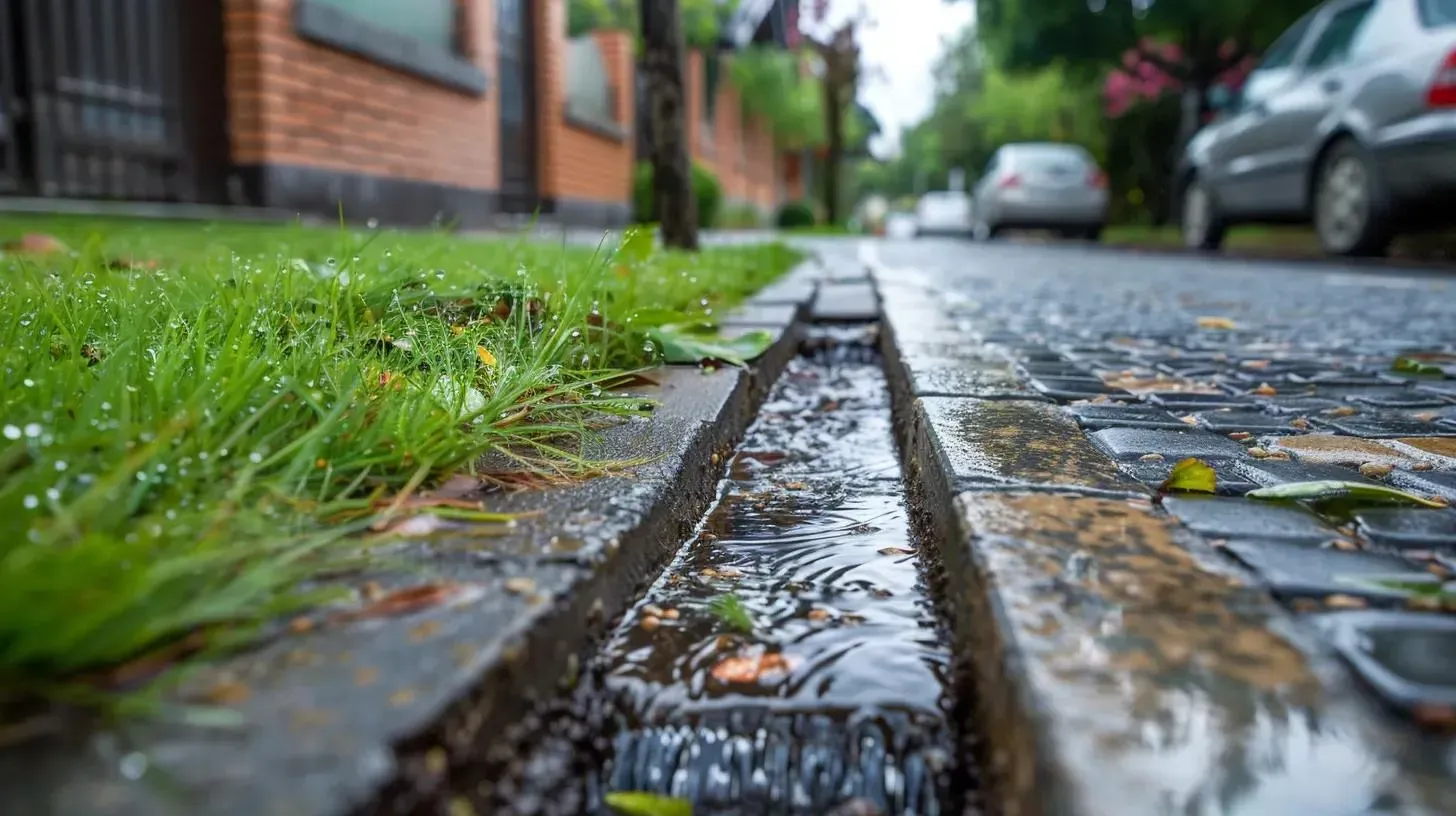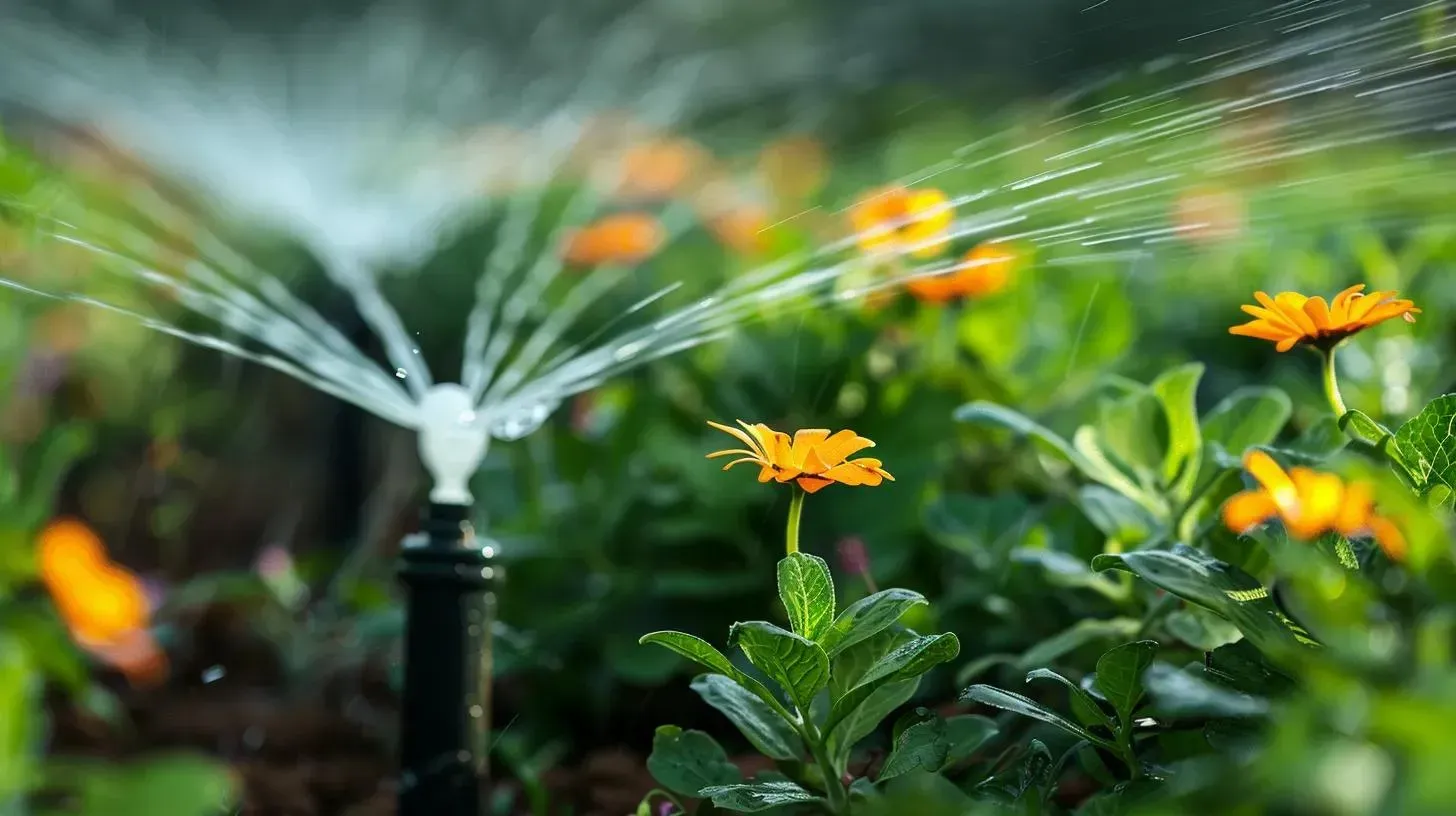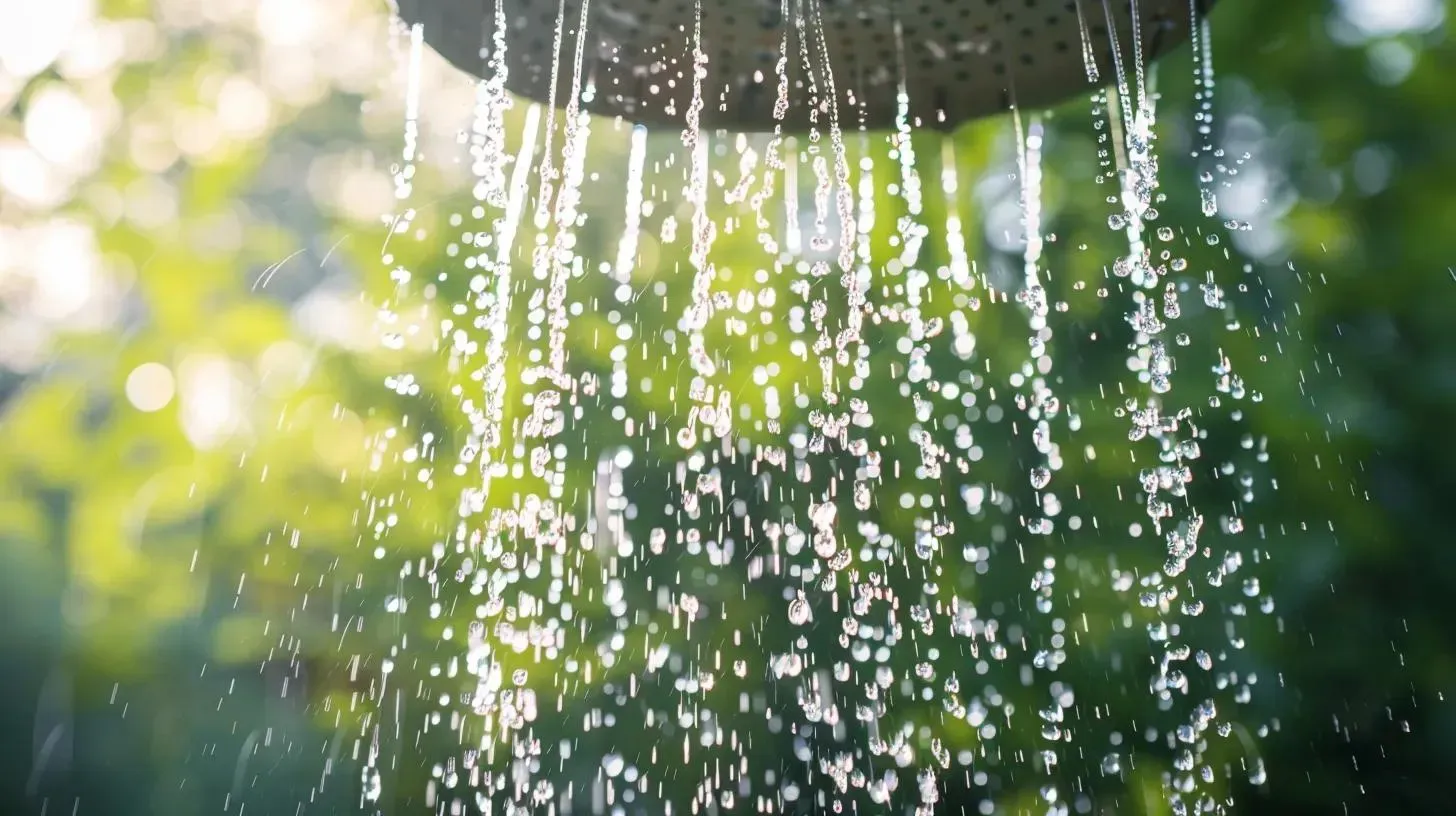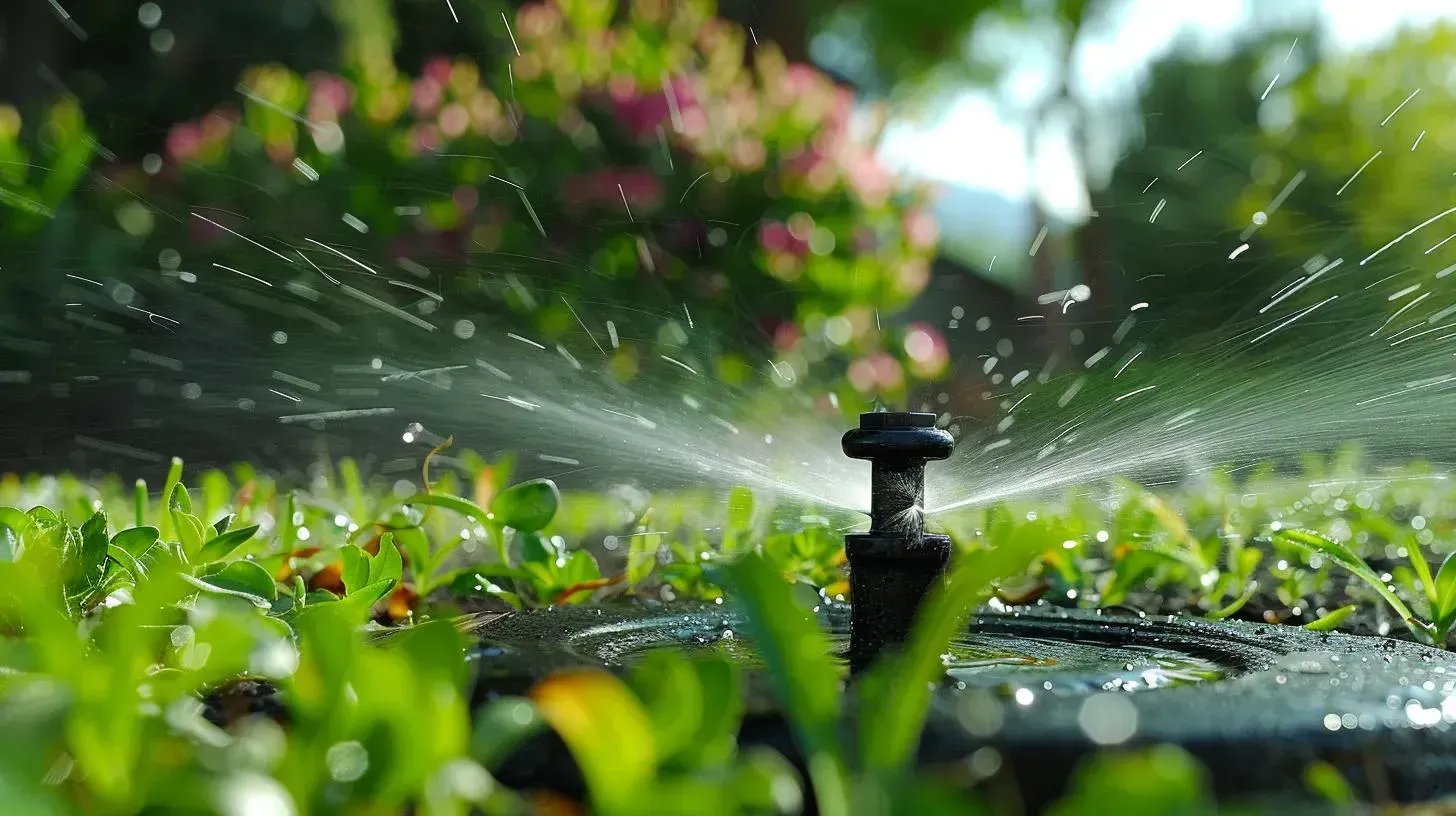When Is the Best Time to Install a Sprinkler System in Hampton Roads?
In Hampton Roads, timing is everything when it comes to installing a sprinkler system. Experts agree that a careful balance between climate, soil conditions, and crew availability determines the best season for this essential home improvement project. With local weather nuances and the demands of modern irrigation technology, homeowners are encouraged to plan their spring sprinkler install or even consider fall installations for a hassle-free experience. This blog explains why choosing the right moment for installation is crucial to both cost-effectiveness and optimal lawn irrigation performance.
Understanding the Local Climate and Environmental Factors
Hampton Roads enjoys a humid subtropical climate. Mild winters, long hot summers, and periodic damp spells make the area uniquely challenging when it comes to maintaining a healthy, green lawn. The right installation time ensures that homeowners can take full advantage of the ideal lawn irrigation timing, maximizing the benefits of modern sprinkler systems that incorporate smart controllers, rain sensors, and soil moisture detectors.
Local contractors observe that during early spring, the soil is no longer frozen, and moderate temperatures allow for easier underground installations. In many cases, spring offers a chance to fine-tune the system—adjusting the new system scheduling to align with evolving weather patterns. On the flip side, fall installations provide a period of lower demand on service providers; hence, homeowners may secure more favorable installation dates and lower costs. These seasonal insights are critical for residents looking to achieve the best performance and durability from their sprinkler system.
For homeowners considering an upgrade or new installation, a visit to resources like Yard Sprinkler System Hampton Roads can provide additional context on how local conditions play a significant role in system performance.
Why Timing Is Essential for a Sprinkler Installation
Benefits of Installing in the Optimal Season
When installation occurs at the right time, several benefits present themselves. First and foremost, proper timing ensures that the system operates efficiently when the lawn needs water the most. Homeowners who opt for a spring sprinkler install witness the immediate benefits of their investment as the growing season kicks in. With optimal soil conditions and moderate temperatures, the irrigation system can evenly deliver water, promote healthy root growth, and prevent wastage.
Additionally, aligning the installation with seasonal weather patterns reduces the potential for unexpected breakdowns. A well-scheduled install means that adjustments can be made early on. For instance, modern sprinkler systems come equipped with smart irrigation controllers that dynamically adjust watering based on rain forecasts and soil moisture levels. This ensures resource efficiency and a lush, uniform lawn using the latest ideal lawn irrigation timing practices.
Challenges of Improper Timing
Conversely, installing a sprinkler system at the wrong time can result in several issues. If the installation occurs too early in the spring, when residual frost remains, the process of trenching and laying pipes might prove disruptive and cause long-term damage to the system. Similarly, trying to install the system during the peak of summer could lead to scheduling difficulties. The intense heat and high demand for irrigation services in warmer months may delay installation, forcing homeowners into a time crunch for new system scheduling.
Improper installation timing also risks uneven water distribution. Homes installed during less-than-ideal weather may struggle with over-watered or under-watered zones, leading to patchy lawns and increased water bills. This not only compromises the health of the landscape but also increases system maintenance costs in the long run. Homeowners are advised to learn more about the pitfalls of ill-timed installations by referring to insights on Reasons to Install a Sprinkler System, where revolutionary results have been documented for those who plan correctly.
Factors to Consider When Scheduling an Installation
1. Local Temperature and Soil Conditions
Before scheduling an installation, a few key environmental factors must be assessed. Temperature is paramount: the ground must be free of frost for the system to be laid properly. Typically, temperatures should remain consistently above 40°F during installation. In Hampton Roads, spring offers a window where the soil is workable, yet the heat is not in full swing to cause quick evaporation and overuse of water. Conversely, fall provides more stable conditions after the peak of the summer heat has subsided and before winter sets in.
Soil conditions also play an important role. Moist but not waterlogged soil allows for proper trenching and installation of underground piping. The right moisture levels ensure that the irrigation system is anchored securely and delivered water reaches the roots where it is needed. Local experts often use soil moisture sensors during installation, a component that's critical in determining if the weather is ripe for a sprinkler system upgrade.
2. Crew Availability and Installation Demand
It is not just nature that influences optimal installation timing; scheduling and crew availability matter too. During the spring, installations can become highly competitive. Many homeowners rush to kick off their spring sprinkler install ahead of the summer heat, which may delay the process or increase the cost of installation. In the fall, however, demand often subsides, allowing installation teams to work with precision and care. The reduced rush during fall means service providers are more flexible with new system scheduling, potentially offering quicker turnaround times and more personalized service.
Interested homeowners can always check insights on Sprinkler System Cost in Hampton Roads for a deeper understanding of how off-peak scheduling might translate to cost savings and improved service quality.
3. Integration of Smart Irrigation Technologies
Modern sprinkler systems are not just about water distribution; they are integrated platforms combining various components for smarter irrigation. Today's systems include smart controllers that adjust watering cycles based on weather forecasts, soil moisture, and seasonal changes. These controllers can be programmed during the installation phase to ensure that the ideal lawn irrigation timing is maintained throughout the year.
Technologies such as automatic timers, rain sensors, and even Wi-Fi connectivity have become standard in the industry. Installing these systems during a lull in seasonal extremes—as often preferred in the early spring or late fall—ensures that the new system scheduling aligns with the modern ecosystem of IoT-enhanced devices. For homeowners in coastal areas, learning about Best Sprinkler Systems for Coastal Virginia Yards might offer additional insights into tailoring smart systems for their unique environmental conditions.
Comparing Spring and Fall Installations
While both spring and fall have their pros and cons, the choice often depends on a homeowner’s priorities, regional weather patterns, and personal scheduling preferences.
Advantages of a Spring Installation
Spring offers an immediate transition from installation to operation, aligning with the natural awakening of plant life. With the ground thawed and ready, the installation process is seamless. Additionally, a spring start ensures that the system is primed to support the lawn as new growth emerges. This not only enhances the aesthetic appeal of the property but also contributes to an efficient water management system during the active growing season.
Many local experts recommend starting a spring sprinkler install before the heat intensifies. This helps maximize the benefits of smart controllers and enables homeowners to adjust watering cycles based on real-time weather inputs over the coming months. Furthermore, a well-planned spring installation can help circumvent the high demand seen in the summer, ensuring that installation crews can work with the utmost precision.
Advantages of a Fall Installation
On the other hand, a fall installation has unique benefits that should not be understated. During the fall, the high demand seen in spring fades, meaning that scheduling flexibility improves. With cooler temperatures and a more relaxed pace, installers are able to work meticulously, and homeowners can benefit from a system set up in a less hurried environment.
Fall installations allow for fine-tuning of the system before the heavy watering demands of the summer season. Homeowners have ample time to calibrate the smart controllers and test the system’s efficiency over the winter months. This process can ensure that once spring arrives, the system operates at peak efficiency. Detailed cost analyses available on Sprinkler System Cost in Hampton Roads suggest that fall might also be more budget-friendly, as reduced demand often lowers labor costs while maintaining installation quality.
Determining the Right Installation Strategy
Analyzing Your Property and Irrigation Needs
For many homeowners in Hampton Roads, the decision on when to install a sprinkler system is not merely a matter of weather—it’s also about matching the system's capabilities with the specific needs of the property. A careful evaluation of the landscape size, soil type, and water requirements forms the cornerstone of the planning process. Properties with larger landscapes might benefit from segmented systems that allow precise water distribution across different zones. In these cases, smart controllers are particularly beneficial as they can adjust watering times according to the specific needs of each zone.
An important part of the planning process is understanding the irrigation demands of your soil and grass type. Sandy soils, typical in some parts of Hampton Roads, may require more frequent, yet lighter, watering cycles compared to loamy soils. Such nuances require a customized system plan that takes local weather, soil composition, and landscape design into account.
Incorporating Complementary Outdoor Enhancements
In today’s holistic home improvement trends, sprinkler system installation is often paired with brilliant landscape solutions such as efficient outdoor lighting. A well-integrated outdoor system not only enhances the visual appeal but also the functionality of the yard. Many homeowners in Hampton Roads discover that combining a sprinkler installation with thoughtful exterior upgrades—like those found in Outdoor Lighting Solutions Hampton Roads—transforms their yards into visually stunning and highly functional spaces.
By integrating both systems, residents benefit from improved energy efficiency, better aesthetics, and a more enjoyable outdoor experience. This combination has become commonplace, especially for those planning a complete outdoor renovation. The dual impact of efficient irrigation and ambient lighting truly sets a property apart in today’s competitive real estate environment.
The Installation Process – Step by Step
Initial Consultation and Site Evaluation
The journey to a successful sprinkler installation begins with a comprehensive site evaluation. Local experts start by analyzing the property’s topography, soil moisture levels, and existing vegetation. Through professional site visits, installers obtain detailed measurements and discuss the homeowner’s priorities for water conservation and landscape enhancement.
During this phase, smart assessments are made regarding the best zones for water distribution and the optimal locations for sprinkler heads. Factors such as landscape design and natural shade are considered, which ultimately influence the placement of controllers and sensors. With thorough planning, the installation process cements a system that is both efficient and durable.
Planning and Designing the System
Following the consultation, installers create detailed blueprints for the system layout. This design phase addresses key factors such as water zones, pressure levels, and system components. Advanced irrigation technology, including rain sensors and soil moisture devices, is integrated into the plan. The layout also considers the advantages of a spring sprinkler install, ensuring that all aspects of the system complement Hampton Roads’ local conditions.
In addition to the primary irrigation components, designers often recommend supplementary features to enhance performance. For example, the integration of automatic timers and smart controllers ensures that the system adapts with changing weather conditions. Detailed planning of these components helps homeowners manage water usage effectively and may serve as a reference for future landscaping improvements.
Installation and System Calibration
Once the design is finalized, the physical installation begins. This entails trenching for pipes, positioning sprinkler heads, and setting up the control system. Professional installers ensure that the underground piping is laid meticulously. Even small deviations in the installation process can affect water distribution, so precision is essential.
Installation crews take great care during the calibration phase. Each component—be it a rain sensor or an automatic timer—is tested to ensure optimal functionality. Calibration is critical to achieving ideal lawn irrigation timing. By fine-tuning the system before the active growing season, the installed sprinkler system offers a seamless transition from installation to regular operations. Homeowners appreciate these thoughtful steps, which ultimately enhance the system’s long-term performance.
Integration of Advanced Technologies
Modern sprinkler installations incorporate advanced technologies to boost efficiency further. Today’s systems are often connected to home automation, enabling remote control and system monitoring via smartphones. This connectivity allows homeowners to adjust watering schedules in real-time, ensuring that the system reacts promptly to weather changes.
Integrating smart controllers with real-time data on humidity, temperature, and soil moisture has revolutionized home irrigation practices. These systems deliver water only when necessary, reducing wastage and ensuring a healthy landscape. This technology serves as a prime example of how a carefully timed installation can lead to financial savings and environmental benefits.
Maintenance and Post-Installation Considerations
Seasonal Maintenance and Winterization
After installation, ongoing maintenance is critical to ensure the longevity of the sprinkler system. Seasonal checks help identify issues such as clogged nozzles, broken pipes, or erratic sensor readings. In Hampton Roads, where weather conditions fluctuate, routine maintenance can prevent expensive repairs in the long run. For instance, before the winter months, it is essential to winterize the system to protect pipes from freezing, thus safeguarding the entire investment.
Routine maintenance also involves periodically recalibrating the smart irrigation controllers. This ensures that the system continues to operate at peak efficiency as seasonal conditions change. Engaging a professional for regular check-ups provides peace of mind and helps maintain an optimally functioning system year-round.
System Upgrades and Enhancements
Over time, technological advancements and changes in landscape needs may prompt homeowners to consider upgrades to their sprinkler systems. The initial installation plan generally allows for easy integration of new components. Upgrading the system can include installing a more advanced smart controller, adding additional rain sensors, or even incorporating new water-efficient sprinkler heads that cover more area uniformly.
Homeowners who invest in timely upgrades and follow maintenance recommendations enjoy a prolonged lifespan for their irrigation system combined with reduced water costs. It is no surprise that regional service providers consistently recommend periodic evaluations and system enhancements to ensure that irrigation remains cost-effective and environmentally friendly.
The Economic Impact of Timing on Sprinkler Installation
Operational Cost Savings
One significant benefit of choosing the correct installation window is the potential for cost savings. Contractors may offer reduced rates during the off-peak periods of installation, which often coincide with fall. The reduced demand during these periods allows homeowners to secure better labor rates without compromising on quality. Furthermore, an installation that is executed with precision can significantly lower future repair costs and water bills.
Investment in a well-timed sprinkler system is not only a commitment to a greener lawn but also an economic decision, ensuring that every dollar spent yields optimal results. When comparing cost scenarios throughout the year, data often points to savings associated with fall installations—especially when combined with proper post-installation maintenance.
Enhancing Property Value and Curb Appeal
Beyond operational savings, a professionally installed sprinkler system contributes significantly to a property’s overall value. Homeowners boast a vibrant, lush lawn that adds to the curb appeal. This is particularly important in competitive property markets, where well-maintained landscapes can be a key differentiator. Neighbors who experience an impeccably watered lawn often find added value when properties are resold—a point emphasized in various homeowner testimonials.
Combining a sprinkler installation with additional outdoor upgrades, such as innovative irrigation design and landscape lighting, creates a comprehensive package that enhances value. Integrated systems that support both hydration and ambiance—such as those featured in Outdoor Lighting Solutions Hampton Roads—further cement a property’s standing in a saturated real estate market.
Real-Life Success Stories and Expert Opinions
Local Contractor Perspectives
Veteran local contractors have noted that the key to a successful sprinkler system installation in Hampton Roads is choosing the right season. Many success stories emerge from projects that began with a meticulous site evaluation, followed by a well-scheduled install. Contractors often share that when homeowners opt for a spring sprinkler install, the system’s performance organically improves as it is fine-tuned through a growing season.
These professionals highlight that proper planning and feedback during the initial consultation play a critical role in achieving optimal results. By aligning installation processes with local environmental conditions, contractors ensure that the new system scheduling accommodates both the immediate functional needs and long-term sustainability goals of the property.
Case Studies on Seasonal Performance
Case studies from various Hampton Roads properties show that homeowners who scheduled their installations during early spring achieved a noticeable change in lawn health almost immediately. In contrast, fall installations, while slower to show immediate results, exhibited exceptional water retention and reduced system stress during the following spring. This long-term efficiency is especially appealing in areas with fluctuating weather patterns.
Property owners who integrated smart irrigation technology reported remarkable improvements in water conservation. Adjustments made during the installation phase, aided significantly by properly timed calibrations, resulted in fewer repairs and sustained system performance. These findings underscore the importance of both ideal lawn irrigation timing and strategic installation windows. Moreover, local service providers emphasize that, regardless of the season, a carefully planned installation is the cornerstone of long-term success.
Technology, Trends, and Future Insights
Innovations in Sprinkler Technology
The irrigation industry is continuously evolving with innovations designed to maximize water efficiency, reduce environmental impact, and simplify system management. Among the latest developments are systems that utilize advanced data analytics to adjust watering schedules automatically based on real-time weather data and soil conditions. Innovations such as smart valve controls, integrated home automation, and high-efficiency nozzles are setting new benchmarks for installation quality.
These technological advances have been embraced by homeowners in Hampton Roads, who are increasingly seeking systems that complement both their lifestyle and environmental goals. When describing these trends, it is common for service providers to encourage potential customers to seek out additional information on Best Sprinkler Systems for Coastal Virginia Yards. This focus on innovation ensures that the installed systems are not only functional today but are also adaptable to future technology shifts.
Trends in Installation Scheduling
Alongside technological innovations, the industry has also witnessed evolving trends in installation timing. With the rise of smart home systems, homeowners are more informed and involved in the scheduling process. Today, installing a sprinkler system is no longer a one-time event but an ongoing relationship with technology. This has paved the way for more dynamic new system scheduling options that consider localized weather data, peak demand periods, and even remote service adjustments.
Service providers have adapted by offering flexible scheduling models. Homeowners now benefit from more personalized installation plans that fit not only with their property’s needs but also their lifestyle and seasonal routines. Understanding these trends helps prospective customers make well-informed decisions that lead to lasting benefits, both in terms of system performance and overall water conservation.
Frequently Asked Questions (FAQs)
Q1: What is the best month for installing a sprinkler system in Hampton Roads?
Experts suggest that early spring, when the ground is reliably thawed, or early fall, when demand is lower, are ideal months. Both seasons offer optimal soil conditions and a smoother installation process.
Q2: Why do many homeowners opt for a spring sprinkler install?
Spring installations capitalize on moderate temperatures and fresh soil conditions, allowing immediate system calibration and efficient water absorption as the vegetation starts to grow.
Q3: Are there any benefits to installing the system in the fall?
Yes. Fall installations often benefit from less competition for service teams, allowing for a more customized schedule and potentially lower labor costs. Moreover, it provides ample time to fine-tune the system before the peak summer watering period.
Q4: How do smart irrigation controllers enhance system performance?
Smart controllers adjust watering schedules based on real-time weather, soil moisture levels, and seasonal variations, ensuring the system delivers water efficiently while conserving resources.
Q5: What maintenance practices are recommended post-installation?
Regular maintenance includes seasonal system checks, recalibration of smart controllers, winterization to prevent pipe damage, and prompt repairs for any clogged or misaligned sprinkler heads.
Conclusion
Sprinkler system installation in Hampton Roads demands thoughtful timing and local expertise. By carefully evaluating local climate, soil conditions, and seasonal trends, homeowners can ensure that their irrigation systems not only function efficiently but also contribute to long-term cost savings and enhanced curb appeal. Whether opting for a spring sprinkler install to kick-start the vibrant growing season or choosing a fall installation to take advantage of relaxed scheduling and cost benefits, the key is to align the project with both environmental and economic factors.
Hampton Roads Irrigation & Landscape proudly provides exceptional irrigation services, ensuring that every installation meets the highest standards of efficiency and sophistication.
Recent Posts

Archives















